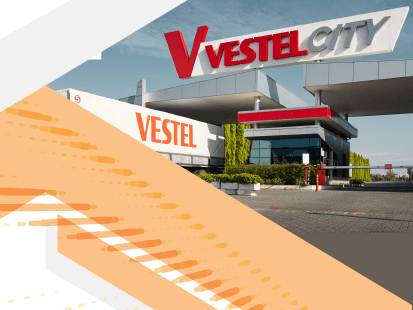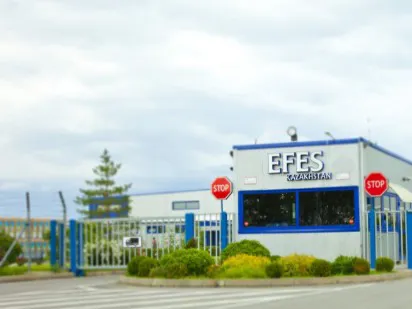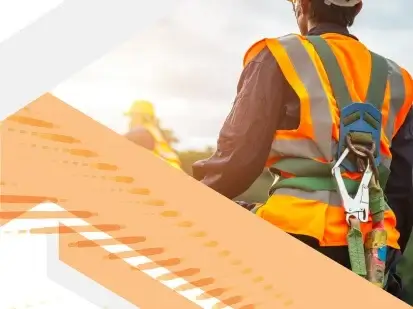09
May-23

VESTEL
Turkey's leading technology company Vestel, which represents a key player in the Turkish economy with its 20,000 employees, technology development capability, and share in exports, is one of the top two manufacturers in the European TV market and one of the top five manufacturers in the home appliances market. Vestel manufactures everything at Vestel City, one of Europe's largest factories in Manisa. Vestel City's Industry 4.0 transformation, which has been ongoing for six years, is 90% complete, covering an area of 1.3 million square meters.
Vestel, the world's first electronics and home appliance company and Turkey's only brand to be featured in the National Geographic Mega Factories documentary series, also holds the 'TPM Special Award for the World's Most Excellent Television Production Factory' as well as the 'TPM Special Award' for seven different factories.
Number

112

3
Main Goal
FORKLIFT PERFORMANCE ANALYSIS
The main goal of Vestel's digital transformation, within the scope of Industry 4.0, was to measure the performance of forklifts utilized in Vestel's three Manisa facilities.
Expected Outcomes
- Real-time monitoring of forklifts (RTLS)
- Reporting how long the forklifts spend in the determined sub-areas
- Reporting of forklift trucks that do not move according to defined criteria ( downtime information)
- Entry of the causes of the bottleneck of forklifts
Challenges
DETERMINATION OF DOWNTIMES
In this 1.3 million square meters mega facility, the client expects that forklifts will be monitored, analyzed, and have their performance measured by the UWB tracking system. One of the primary considerations in analyzing forklift performance was the accessibility of infrastructure that enables the detection of forklift bottlenecks and the recording of their causes.
Solution
EQUIPMENT TRACKING AND PERFORMANCE ANALYSIS SYSTEM
Wipelot's Lotus RTLS software tracked the forklifts within the facility in real-time with an accuracy of 20 cm using UWB-based active RFID devices and anchors placed on the site for precise location.
Forklift movements were recorded thanks to the Lotus, and this data was made reportable in the form of footprints and density heatmap reports.
The forklift working zones were redefined in the most efficient way possible, and the forklift requirement in the working zone was correctly planned, resulting in increased efficiency and performance. Furthermore, an algorithm was developed to detect bottlenecks, and authorized personnel could enter the causes for blockages into a report.
Gains
PERFORMANCE AND DEMAND MANAGEMENT
The implemented system provided the necessary information to analyze the forklift requirements throughout the facility or in the relevant working area, resulting in cost savings. Determining the forklift bottlenecks and circumstances that caused delays, such as traffic flow, resulting in increased efficiency.
The primary objectives to be aimed at with the technology used were determined by evaluating data such as routes, travel times, bottleneck moments, and causes for the bottleneck of forklifts. It ensured that the facility's equipment was under control.
The location data of personnel and equipment was analyzed with high precision, and the route of the assets according to the past date/time interval and, most importantly, the efficiency of the equipment in the short and long term was monitored.
A daily plan was set up for each goal, and the data collected at the end of the day were used to analyze the results. The system defined equipment operating regions based on needs, and excess equipment was redirected to different regions where it was required. Energy consumption has been reduced by redirecting equipment to the required regions.
The system generated reports on equipment routes and lap times. Thanks to the analyses, the optimum routes were recreated, which reduced shift start losses. Furthermore, these improvements reduced unnecessary equipment overcrowding, resulting in a significant decrease in occupational accidents.
With the system modifications, the causes of bottlenecks were instantly monitored. As a result, the causes of bottlenecks were examined, measures were implemented, and unplanned bottlenecks were significantly reduced.
The system helped determine the appropriate type and number of equipment to lease during renewal periods on the needs. As a result, the labor force was reduced by 3.1%, resulting in cost savings.
Why Choose Wipelot RTLS Technology?
Since its establishment, Wipelot has been focused on developing efficiency and safety solutions for the workplace. For more than 16 years, we have been helping companies protect their employees with the solutions we have offered, and we are continuing to improve our technology with the experience we gain in the field.
Wipelot is a member of Omlox, UWB Alliance, and FiRa Consortium, which brings together technology companies that produce 100% of their own hardware and software systems and develop solutions with ultra-wideband technology (UWB), and has been listed among the fastest growing technology companies of TOBB 100 and Deloitte Technology Fast 50, and has received many awards in the field of industrial IoT in Turkey and abroad thanks to its projects.





